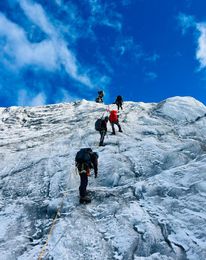What's in a name?” wondered William Shakespeare’s Juliet Capulet. “That which we call a rose by any other name would smell as sweet.” We Indians, English-ruled and mostly English-schooled, would agree.
Not the Chinese. A sage told them 2,500 years ago that “if names be not correct, language is not in accordance with the truth of things. If language be not in accordance with the truth of things, affairs cannot be carried on to success. When affairs cannot be carried on to success, proprieties and music do not flourish.”
Got it? Won’t blame you if you didn’t. The sage’s name is Confucius.
Rendered in plain English, all that the wise guy said was, call a spade a spade. If you call it a hammer, you may use it to drive a nail when you want to hang a picture, and all the mud would splash on your wall. Simple, isn’t it? Look how wise guys of the ancient world complicated things, as do many of our motivation speakers. They dress up simple things—good old sayings, maxims, proverbs, Panchatantra tales and the kind of things that our grandmothers told us—in complicated style and present them as nuggets of their wisdom.
Let’s get back to the Chinese. Every now and then, they feel an inadequacy in the names of people and places, and give new names. For us, that’s confusion worse confounded, as John Milton said. They renamed Fa-hien as Faxien, Huen-Tsang as Xuanzang, Peking as Beijing, and even their Mao Tse-tung as Mao Zedong. Thank God, Peking duck has been left alone.
What they call their people and places is their business. Problems crop up when they start renaming our people and our places. That, I would say, is a bad habit they picked up lately—to be precise, since the turn of the century.
Hao Xiaoguang, a researcher in their Surveying and Geophysics Institute, found in 2010 that a map they had published in 2002 had only six Chinese names for places in our Arunachal. Since they claim Arunachal to be southern Tibet, and all of Tibet to be theirs, they started giving their kind of names to places there.
So they gave new names to six places in Arunachal in 2017, another 15 in 2021, 11 more last year, and 30 early this year. That makes it three score and two spots on the map. Enough to make Atlas shrug and India shriek. All our cries ended up as cries in the Himalayan wilderness, just like our protests over the road they built through Aksai Chin, or over the six-lane highway they are building through Gilgit-Baltistan.
Finally S. Jaishankar called the bluff last April. “If I change the name of your house, will it become mine?” he countered when someone asked him about it. “Arunachal Pradesh was, is and will always be a state of India. Changing names does not have an effect.” The matter would have ended there, the Chinese would have continued to alter their atlases, and we and the world would have continued calling them by their older names.
But now we are getting into the act. A 15-member team of climbers from our National Institute of Mountaineering and Adventure Sports recently scaled a 20,942-foot peak in Arunachal, and have proposed to christen it Tsangyang Gyatso Peak after the sixth Dalai Lama who was born in Mon Tawang in 1682.
That has left China fuming, but is it actually a wise move? In the long Himalayan run, wouldn’t it help China buttress their false claim—that the Dalai Lamas are all Tibet’s and Tibet is all China’s?
Climbers, you know better—look before you leap!
prasannan@theweek.in


